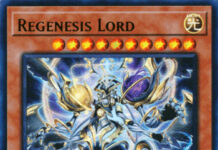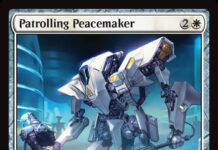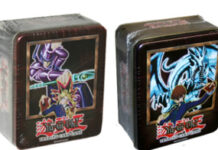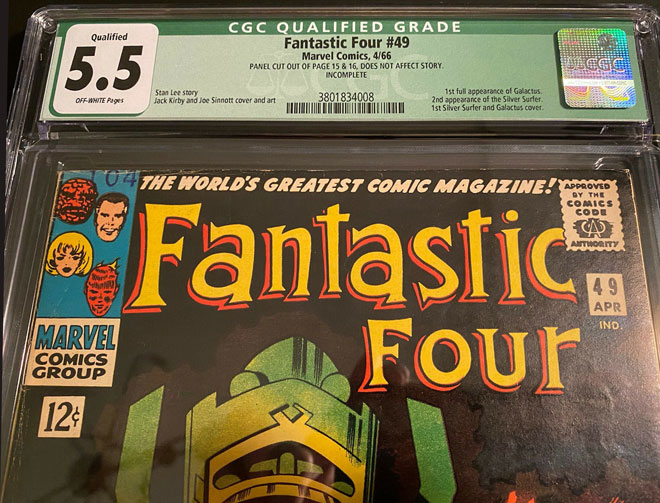
Readers did not treat comic books very nicely in the olden days. Nowadays, readers pick up a comic book and save it as a collectible. Nowadays, people board and bag their comics as soon as they read them. Some comic books are not even being read, they are simply treated as investments.
Back in the Golden Age (1938-1955), Silver Age (1956-1973), and Bronze Age (1973-1985) of comics, people would read their comics, and commonly dispose of them afterwards. And there was no internet back then, so advertisers would use pages of comic books to sell their products. After a person read their comic books, they might have cut out a coupon and mail-ordered something!
You could buy weightlifting guides:
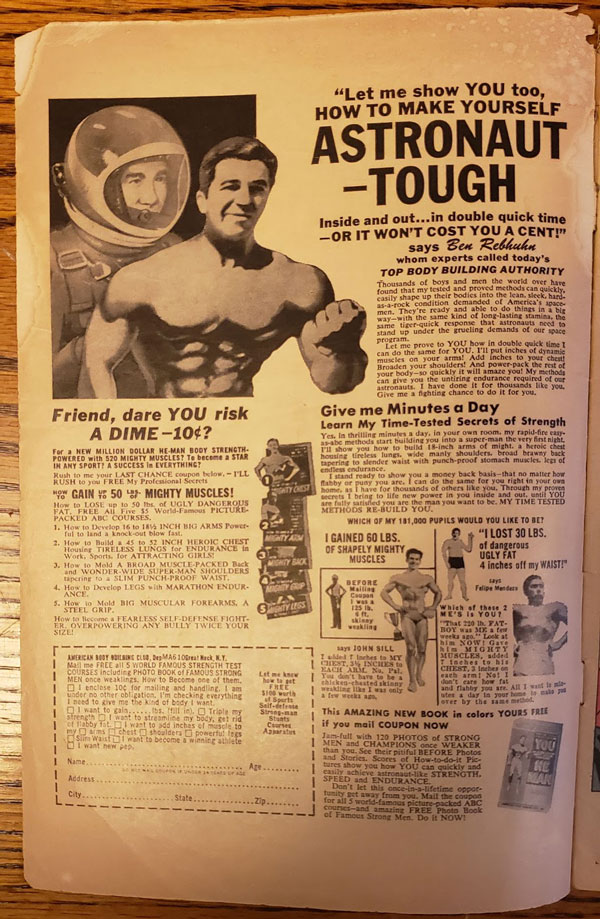
You could buy plastic army men:
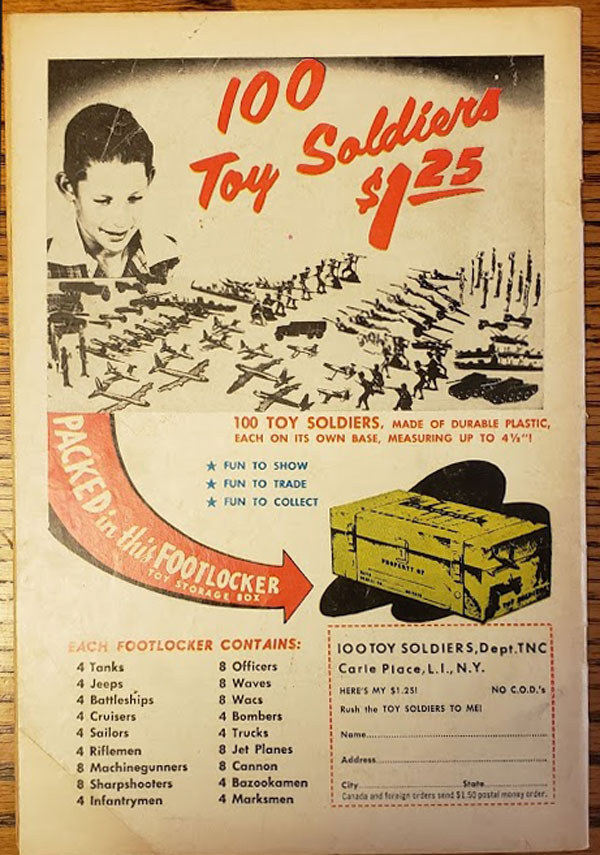
You could buy Coins and Frontier Cabins:
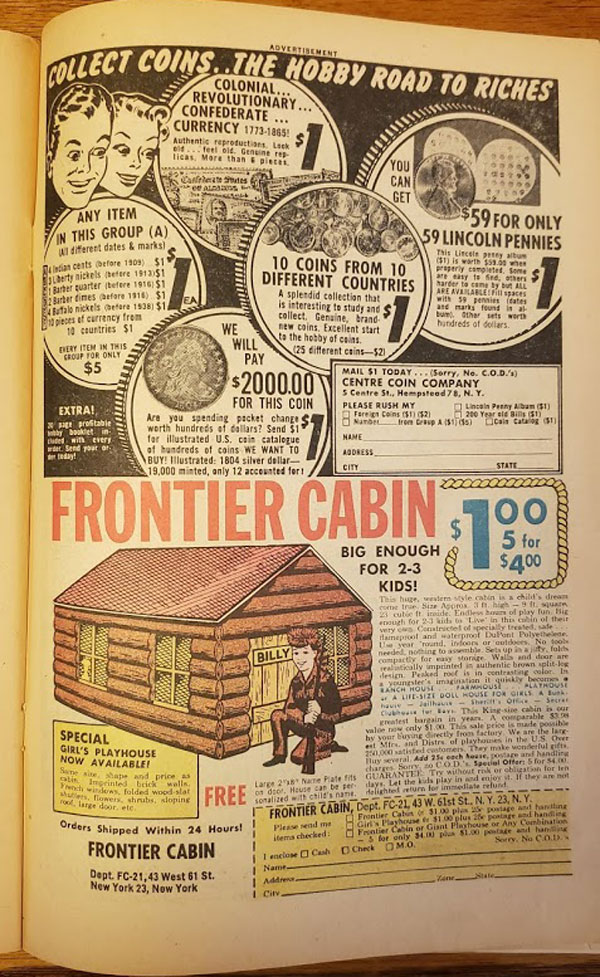
You could even order live seahorses and squirrel monkeys!
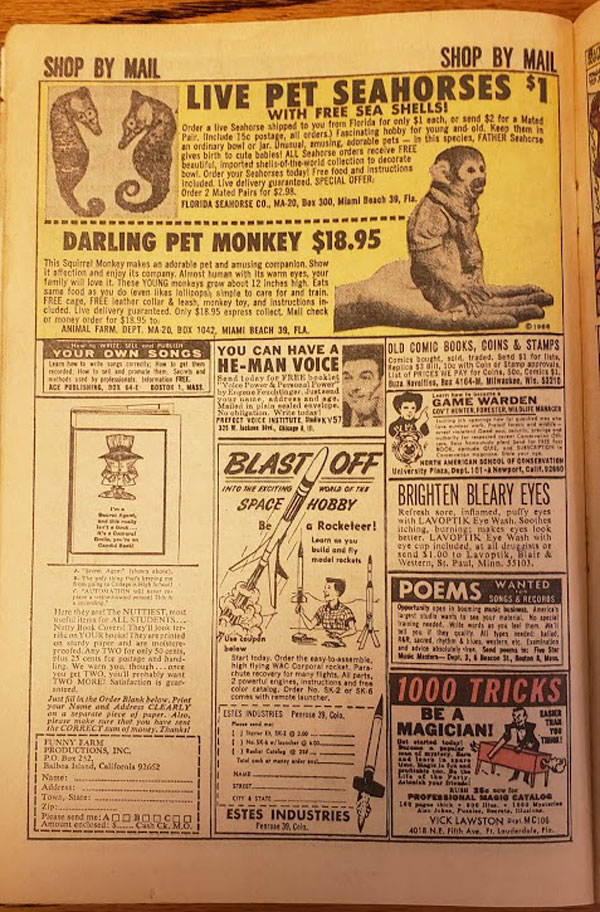
Side Note: Want to read some crazy stories? Google “Comic Book Darling Pet Monkey” and see what comes up.
Did people clip these coupons? You betcha! It is common to find coupons clipped from old comic books. Coupons were all over the pages comic books and usually appealed to the readers at the time.
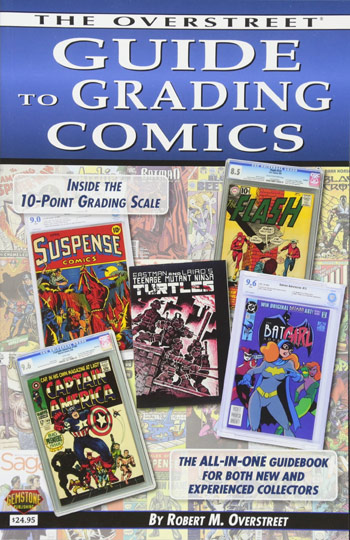
According to the most recent Overstreet Guide to Grading Comics, the best grade any comic with a coupon missing could rate is “Poor” to “Fair”. Overstreet would rate the comic anywhere 0.5 to 1.0.
An older versions of the book I have from 1992 actually said a book could rank “Good” though:
Good – “Coupon may be cut from the back cover or interior page as long as the story readability is preserved.” And the book could rank 1.5 to 3.4.
What changed in the last 20 years with Mr. Overstreet? Why did Bob get so harsh?
How many pages are in a typical Comic Book?
A standard comic book is 16 pages with a front and back cover. The 16 internal pages are actually 8 sheets of paper that are about 14″ wide by 10″ tall. The cover is one more glossy paper sheet that is the same size. So a comic book is actually simply 9 sheets of paper that have been assembled, stapled and folded into a standard 7″ x 10″ comic book.
If you add it all up, there are 36 pages in a comic book to tell a comic book story:
- 16 Inside story pages x 2 = 32 pages
- 4 Cover pages (Front Cover, Inside Front Cover, Inside Back Cover, and Back Cover)
How many pages of advertisements are in a Comic Book?
The inside front cover, inside back cover, and a back cover usually were full-page ads for toys, or mail order products.
Of the 32 inside pages, usually about 12 -14 pages are filled with ads. And most these ads had coupons to cut out to mail away for their goodies.
So, by rough estimate, nearly 50% of an old comic book is filled with advertising. That gave readers plenty of enticement to be swayed, clip a coupon, and mail away for something. Pretty sure this one got me:
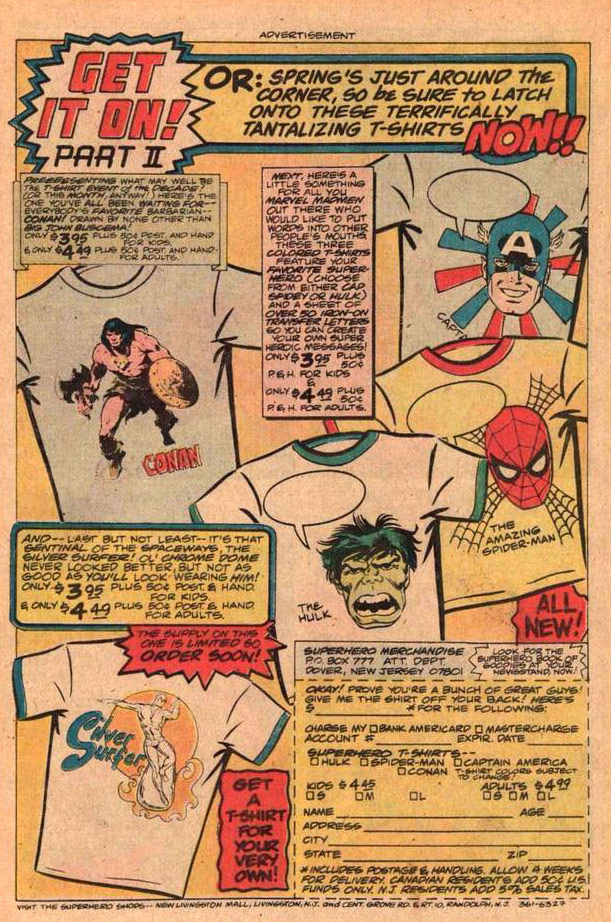
The Marvel Value Stamp
One of the saddest experiences to happen to comic book collectors in the early 1970’s was the Marvel Value Stamp and the Marvel Value Stamp Book.
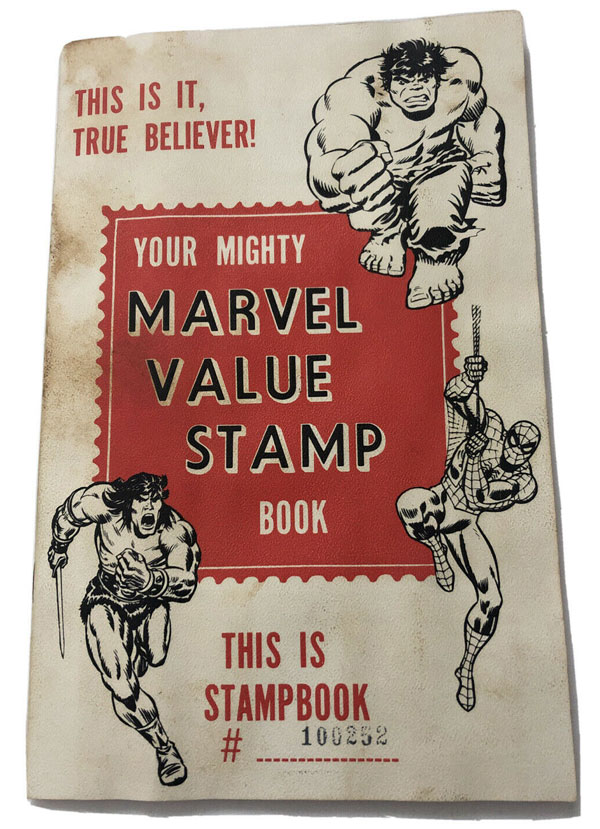
In 1974, Marvel started adding Marvel Value Stamps to their comic books, and encouraged readers to cut them out and save them! These stamps appears all the way into 1976.
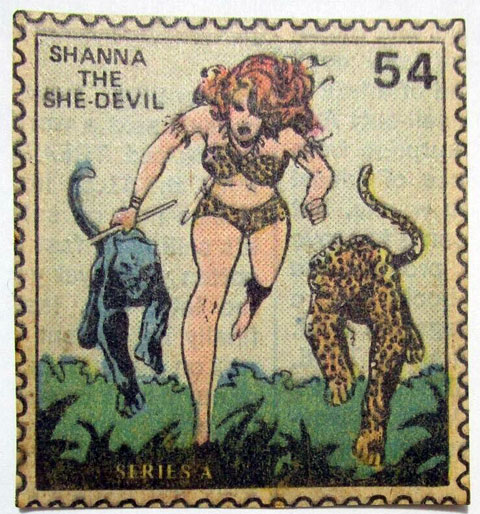
And the most famous … or infamous … Marvel Value Stamp is Shanna the She-Devil. This value stamp appeared in a Hulk #181, which was also the first appearance of the Wolverine.
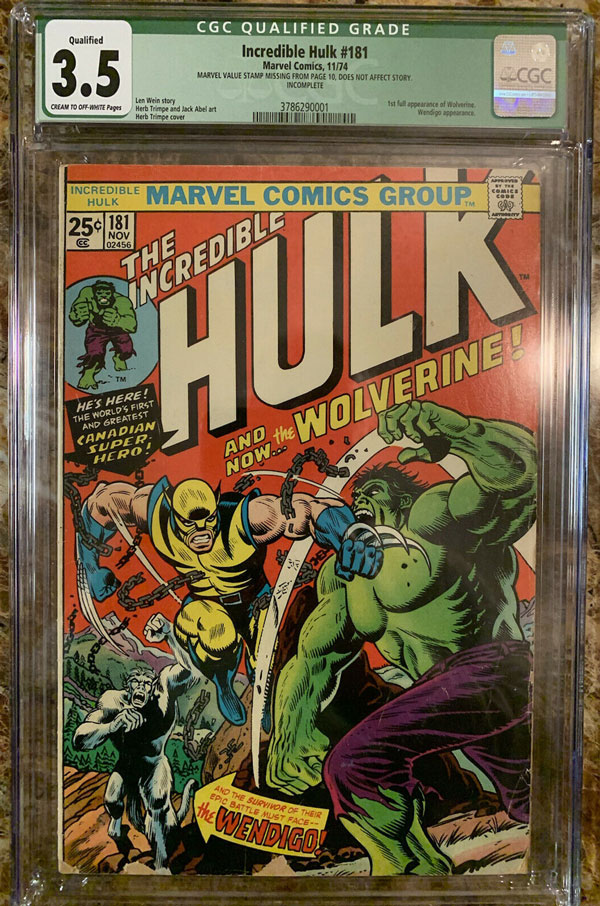
If you collected stamps back then, and saved your comic books, you might have clipped the Value Stamp from your Hulk #181! CGC has graded over 800 Hulk #181’s that are missing their Marvel Value Stamps.

These are some other key comics impacted during the Marvel Value Stamp days:
- Thor #225 – First Appearance of Firelord
- Hulk #180 – First Cameo of Wolverine
- Hulk #182 – 2nd Cameo of Wolverine
- Astonishing Tales #25 – First Deathlok
- Omega the Unknown #1 – First Appearance
- Son of Satan #1
- Amazing Spiderman comics during that time – early Punisher appearances, Gwen Stacy’s Clone, 1st appearance of Harry Osborn as the Green Goblin, 1st Tarantula and more.
There are over 300 Marvel comic books that featured Marvel Value Stamps during that era.
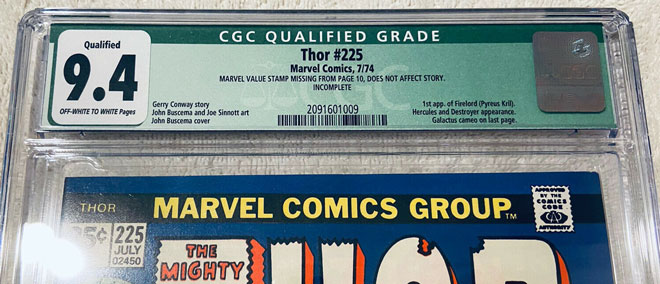
The Green Label of the CGC
There are a few ways your book can receive a 0.5 grade by CGC:
- The book is beat to crap – crumpled, missing pages, etc.
- The book is fairly nice, but missing a coupon
- The book is fairly nice, but missing Marvel Value Stamp.
- Water Damage, etc.
CGC decided to create a Green “Qualified” Label to help collectors differentiate the variety of books that were getting 0.5. The standard label is blue, and the Qualified Label is green. The Qualified Green Label has been historically seen as the Black Plague by many collectors. What exactly is this Qualified Grade? Here is how the CGC defines it:
- Qualified Label (Green) – A Qualified label is used by CGC for collectibles that have a significant defect that needs specific description, or to note an unauthenticated signature (one which was not witnessed by CGC). For example, a comic book with a missing coupon that otherwise grades 6.0 will receive a Qualified grade, avoiding a considerably lower grade. CGC would give this book a Qualified grade of 6.0 and a Label Text notation “COUPON MISSING FROM PAGE 10, DOES NOT AFFECT STORY.” Or, if the book is signed on the cover it may be noted as “NAME WRITTEN ON COVER IN MARKER.”
I am not going to discuss unwitnessed signatures in this article. We are solely focusing on people that took scissors to their comic books. Usually, if something has been cut out of a book, the CGC will consider the comic “Incomplete“. An incomplete book would have typically be given a Standard Blue CGC Label and a score of “0.5 to 2.5”. The reasons for the Incomplete Grade would be described on the label.
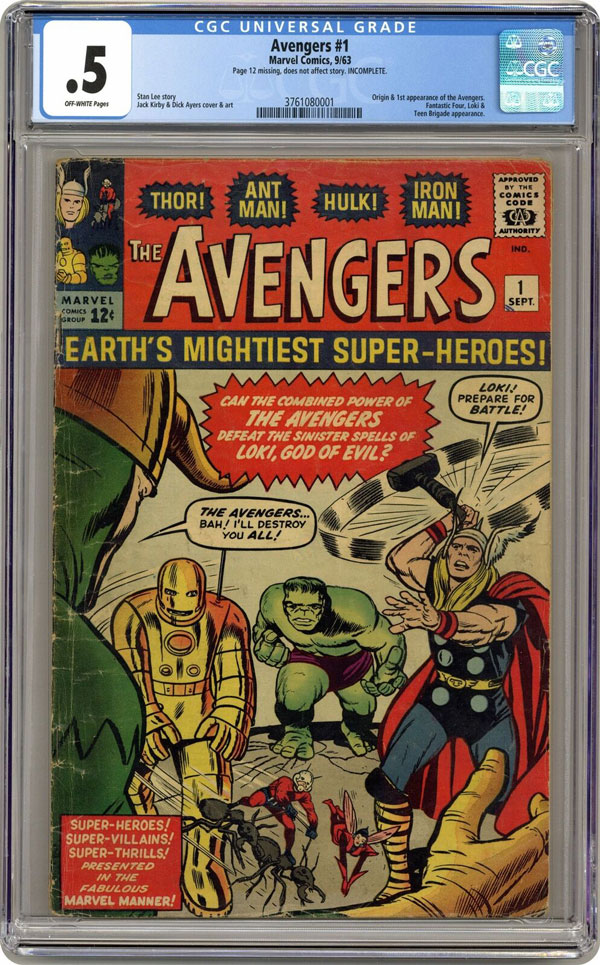
The problem with a blue CGC “incomplete” grade though is that it doesn’t really tell you the condition of the rest of the book. What else is wrong with the Avengers 0.5 featured above? It looks nicer than a 0.5 on the cover – at least it does to me.
The CGC Green Label can help collectors that are not bothered by cutouts still know the grade of the rest of the book. What if someone took the utmost care of their book, but still cut the Marvel Value Stamp out of it? Like this Thor #225 below:
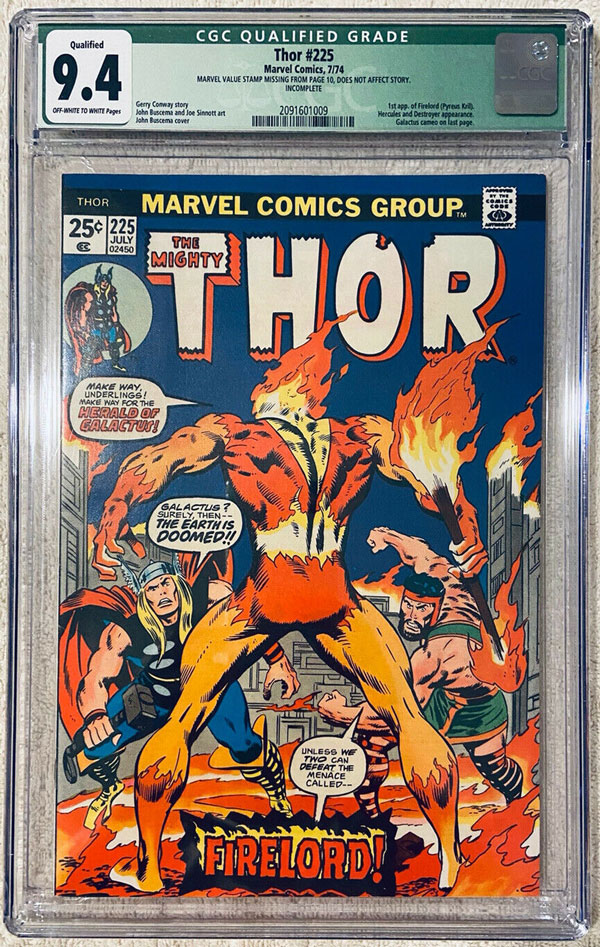
CGC would have given this a low grade in a Blue Label. But this Thor #225 presents itself beautifully, and the comic book story is 100% in tact.
The CGC Green Label Conundrum
What version of a slabbed Hulk #181 you rather collect? A Blue Label 4.0 with cover creases? Or a Green Label 7.5 that presents itself beautifully? If that CGC Green Label 7.5 was converted to a CGC Blue Label, it would probably only be graded at 0.5 to 2.0. What are you going to choose? This is where a lot of people’s opinions differ.
Many people have deemed CGC’s Qualified Label as the “GLOD” = the Green Label of Death. Many folks consider a book missing a coupon inferior and uncollectible. It is a 0.5, and worth 0.5 prices. They consider those books to be “reader copies” that are not worth grading.
So, many people hate the Green CGC Label, but others love it. Opinions are all over the place. Here is a great article on Scoop where a lot of knowledgeable collectors and store owners debate the Blue 0.5 rating and the Green Label Conundrum.
The Times They Are a-Changin’
Am I showing my age by pulling out an old Bob Dylan song as header?
There is a new generation of collectors out there! And they are starting to buy up CGC Green Label Comic Books, especially they keys. Here are some recent sales on eBay from early 2021 of Qualified Green Label Comic Books versus their Blue Label counterparts:
First some Hulk #181’s – First Full Appearance of Wolverine
- 4/2/2021 – Green Label 3.5 – $2700
- 4/2/2021 – Blue Label 3.5 – $3500
- 2/14/2021 – Blue Label 1.5 – $1600
- 3/31/2021 – Green Label 6.0 – $3700
- 3/15/2021 – Blue Label 6.0 – $5300
- 3/23/2021 – Green Label 4.5 – $3900
- 4/10/2021 – Blue Label 4.5 – $4300
- 4/2/2021 – Blue Label 2.5 – $2950
- 2/12/2021 – Blue Label 0.5 – $1199
Hulk #180 – First Cameo Appearance of Wolverine
- 3/17/2021 – Green Label 5.5 – $550
- 3/3/2021 – Blue Label 5.5 – $650
- 4/11/2021 – Green Label 4.5 – $520
- 3/3/2021 – Blue Label 4.5 – $650
Thor #225 – First Appearance of Firelord
- 4/1/2021 – Green Label 7.0 – $105
- 1/15/2021 – Blue Label 7.0 – $120
Daredevil #1 – First Daredevil
- 3/14/2021 – Green Label 3.5 – $2025
- 3/1/2021 – Blue Label 3.5 – $3950
- 4/1/2021 – Blue Label 1.5 – $1625
- 1/19/2021 – Blue Label 0.5 – $800
Spiderman #3 – First Appearance of Doc Ock
- 4/7/2021 – Green Label 4.5 – $1910
- 2/18/2021 – Blue Label 4.0 – $2850
- 3/17/2021 – Blue Label 2.5 – $1775
Fantastic Four #49 – First Full Galactus, 2nd Silver Surfer
- 3/29/2021 – Green Label 4.0 $800
- 3/19/2021 – Blue Label 4.0 $899
- 3/2/2021 – Blue Label 2.0 $400
Spiderman Annual #1 – First Sinister Six
- 4/15/2021 – Green Label 3.5 $1088
- 4/4/2021 – Blue Label 3.0 $1325
- 4/10/2021 – Blue Label 0.5 $565
As you can see, comic book hunters are actually throwing caution to the wind when hunting down key issues of comics. The Green Label sales prices are generally 10% -30% less than Blue Labels with the same grade. Sales in 2021 are not reflecting the “Green Label of Death” stigma that many people have given Qualified books. Prices are definitely higher than 0.5 to 2.0 Blue Labels!
Many collectors will tell you that the general rule of thumb for collecting Green Label vs Blue Label Comics is “A Green Label comic book is generally worth about 2 grades lower than the equivalent Blue Label Comic”. So a nice Green Label 7.0 should be ballparked in value somewhere near a Blue Label 5.0. This is certainly not always true by looking at values above, but it is something to consider if you are buying Green Label CGC Comic Books.
Final Thoughts
There are some pretty strong opinions on CGC Qualified Green Label Comic Books. The collector camp that considers them to be the Green Label of Death will most likely never change their opinions and will never pay a premium for a comic book that is “incomplete”. The book is incomplete. It is inferior. It is a 0.5. Done.
But there is also something to be said for taking comic books for what they were 40-80 years ago. Comic books were periodicals similar to magazines and newspapers. Comic Book Publishers made most their money by selling advertising. The advertisers made their money by convincing the readers to clips their ads and mail them in with some money for their products. It is hard to fault people for clipping comics in the 1930’s, 1940’s, 1950’s, 1960’s and 1970’s, as that was their intended use. Clipped or not, we’re fortunate that some of those great comics are still around!
My Thoughts?
After college, I traveled all around the United States for my engineering job in the 1980’s and 1990’s. I used to frequent the local comic book shops in the evenings and look for cool Silver Age comics in their back issue boxes. I didn’t really care at the time if comics were missing coupons, I just wanted to read them and own a little piece of history. Getting a book graded and slabbed wasn’t even a thing back then.
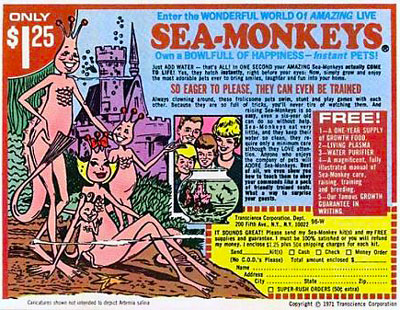 Once a book is slabbed in a CGC Holder, it’s all about cover presentation to me. No one can see anymore if there is a coupon for Sea Monkeys clipped out.
Once a book is slabbed in a CGC Holder, it’s all about cover presentation to me. No one can see anymore if there is a coupon for Sea Monkeys clipped out.
I’m fine with Green Labels to be honest, and I see their value. I just like to have some skin in the game. I have never been bothered by clipped coupons in old comic books. People were simply using their comics for their intended purposes. That’s just part of the history in my opinion. I don’t even mind if a whole page is missing from a comic book, just as long as the story in fully in tact. And up until recently, you could pick these up for a very good price. Newer Comic Book Investors have started to notice the value of Green Label Books with nice covers, and have started to pounce on the keys.
I don’t know what is on Page 16 of 1964’s Avengers #11, but many issues of Avengers #11 are missing that exact page – go on over and look at eBay if you want see. The CGC Census shows that 100 copies of this graded book have green labels. It must have been a fantastic advertisement with a deal that was too hard to pass up! Avengers #11 features a very early appearance of Spider-Man, the 2nd appearance of Kang the Conqueror, a Stan Lee story, and a Jack Kirby cover. I would love to own a copy of that issue – even in a Green Label!
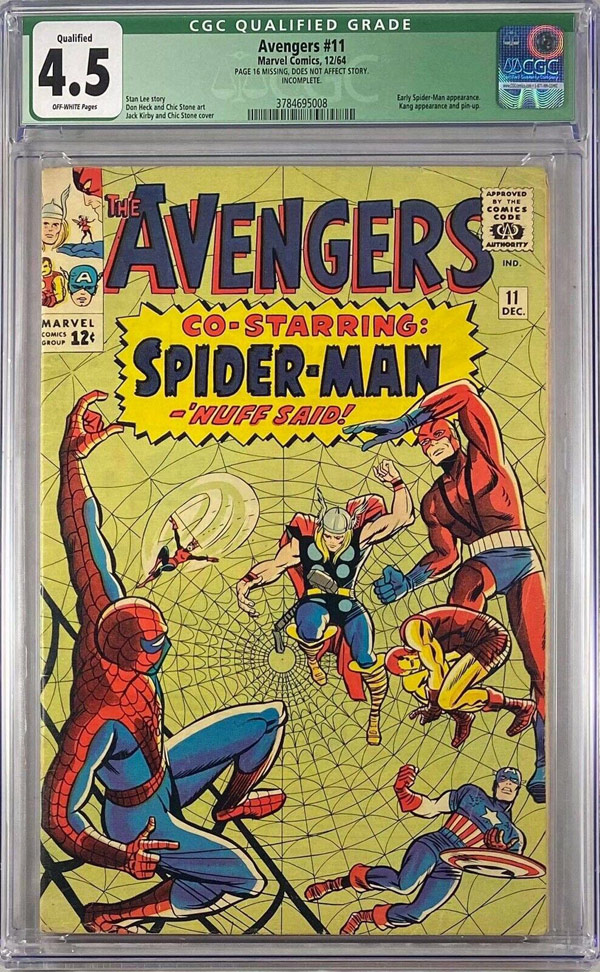
Pojo Note: If you are buying an old back issue of a comic from a Local Comic Shop, check for missing coupons and count the pages. I would always ask the comic shop owner first if this is acceptable, and if you can remove the comic from the bag & board. Sometimes, the comic book shop owner will simply open the comic for you. 😉

